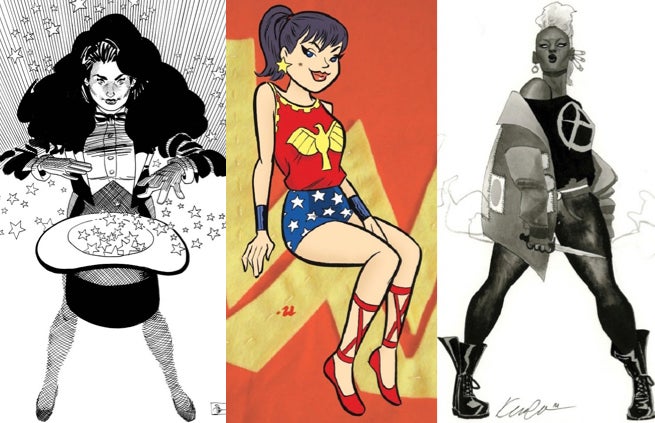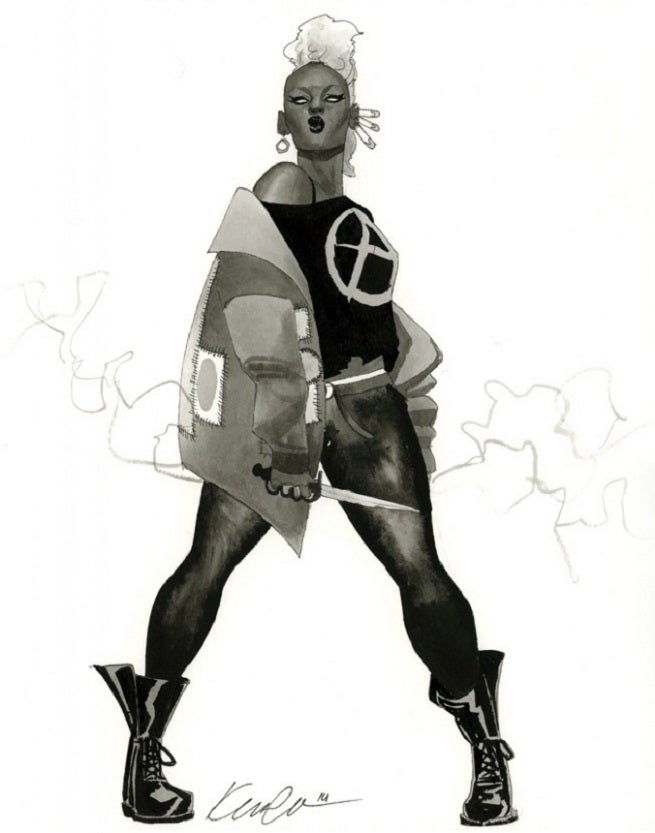Welcome back to ComicBook.com’s The Folio, a new column dedicated to the hobby of collecting original comic art. For those just joining us, we last talked about the ins and outs of buying digital art proofs. Today, we’re going to talk about the notion of “art directing”: Is it harmful or helpful?
Videos by ComicBook.com
When commissioning art from a favorite artist, you likely have a list of requests and questions for the piece. Will it go in a themed sketchbook, or will find a home in a portfolio honoring one totem character? And once you decide from there, how detailed and specific do you want your piece to be? But before you unload all of these questions on your artist, it’s usually better to stop and realize that the hyper hands-on approach isn’t always the way to go.
Specific direction is one way to make sure you get exactly what you want. After all, you are making a serious investment, and want serious returns in exchange. But where is the line between specific, and overbearing? Say you want a Batman from an artist. It’s a simple request. There’s no real reference involved and you can execute it in many ways: Brooding, over a gargoyle, fighting a goon, throwing a batarang, and so on. Hardly a challenge, right? But if you went up to an artist and said, “I’d like Batman, ready to leap off Police Headquarters, with a Silver Age Batarang in hand and an intense look in his eyes; The Batwing hovering in the sky and the cityscape behind him; Then the Bat Signal (brandishing the Dark Knight logo) tucked in the back as well. And maybe you can fit in Robin somewhere. And Bat-Mite.” We can all agree that’s a bit much, yes?
But that doesn’t mean you have to give a completely open-ended request.
When I commission art for my favorite character, Zatanna, I restrain my requests to the classic attire with some sort of mystical detailing. That’s usually the most I offer as prerequisites. Other times, I just let them draw their own thing. After all, it is their job. When I commissioned Evan “Doc” Shaner some years back about for a Zatanna, I simply asked for her iconic attire and nothing more. A few months later this arrives in an email.
Needless to say I was floored, especially with the Alex Toth vibe he threw in.
And don’t worry, not every artist is offended by direction from their clients. “I always find a little bit of direction helpful,” says artist Rob Ullman. “Nothing wrong with having a starting point.”
When someone is investing a large sum for a sizable project, Ullman doesn’t even mind giving them a work-in-progress proof, to see if it’s the direction the patron wants to go in. ” I like to send a thumbnail if I’m doing anything more expensive than about $100,” he says.
Collector Terence Hoskins, who is known for his Punk Rock Storm collection, doesn’t mind giving a pointer or two when setting a commission up, but keeps it light.”The only direction I ever give is ‘can you maybe incorporate a knife into the piece’. That’s it, and I’ve never been disappointed,” he says. “I’m not an art director, and I’m sure that gets exhausting to people who actually do have to work with professional art directors.”
He also noted that excessive direction can potentially lead to unfavorable results for some people. “From overhearing things and talking in my circles, I’ve heard that a ton of art direction generally gets you put on the back burner over other commissions repeatedly.” Hoskins discussed a recent commission with newly-crowned Catwoman cover artist, Kevin Wada. “I asked Kevin for a Punk Rock Storm piece and if he could incorporate a knife into the piece like usual, that’d be awesome. Otherwise, I leave left it in his capable hands.” The result?
“Jaw dropping,” Hoskins exclaimed. “He did what I asked, but it’s also fully his vision. I try to be minimal in requests, because I don’t want to hamstring the artist’s creativity or desire to work on my piece. The best art happens when it’s fun for both patron and artist.”
Marvel Comics’ Mark Brooks also feels the same way in how he handles overly-directed pieces. “I prefer not to do commissions with heavy requests and instructions other than the character(s) and costume preference. On occasion, I will take requests like ‘Can you have Psylocke with her psy-blade,’ but instructions like ‘Can you have Psylocke in a kicking pose with her holding a katana (not a samurai sword) in her right hand and her psy-blade with her left, but also look really hot and on a rooftop on a cloudy night. But, I also want to see the moon, and the rooftop should be a Japanese rooftop that also looks modern. And, I want to see Psylocke’s face really well with ninjas–but not black ninjas. I want red ninjas.’”
“What this is really telling me is “I have an exact picture of this piece in my head and there’s no way you will ever be able to live up to it!” Brooks revealed.
Brooks continues with how creative freedom is important when creating a commissioned piece. “I also find that, most of the time, a patron’s idea isn’t as good as something I can come up given the creative freedom. It’s great that they have an active imagination, but due to the fact that I have been doing this for almost two decades, I can pretty much guarantee that I am more creative and have a more vivid imagination.”
It’s not ego or hubris, he explains. It’s simply that he’s been at this this for a long time, and imagination and creativity are like muscles. “My imagination spends 8+ hours a day in the gym so it’s likely that, given the freedom to do something I came up with, the patron will be even happier. Couple that with the fact that, given creative freedom, I will enjoy the experience more and the patron will come away with a much better piece of art, rather than something that has been directed to death.”
So where do you find the balance? It honestly varies on a case-by-case basis, but you have to trust the artist and in their work. Sometimes, that comes with knowing the artist first hand and their specialties. You can get feel for them after a few pieces, and you know what their comfort zone is.
Readers and collectors, what say you with this? Do you feel like you should get exactly what you want since it is your money, or would you rather trust the artist’s vision and their expertise? Sound off in the comments.












